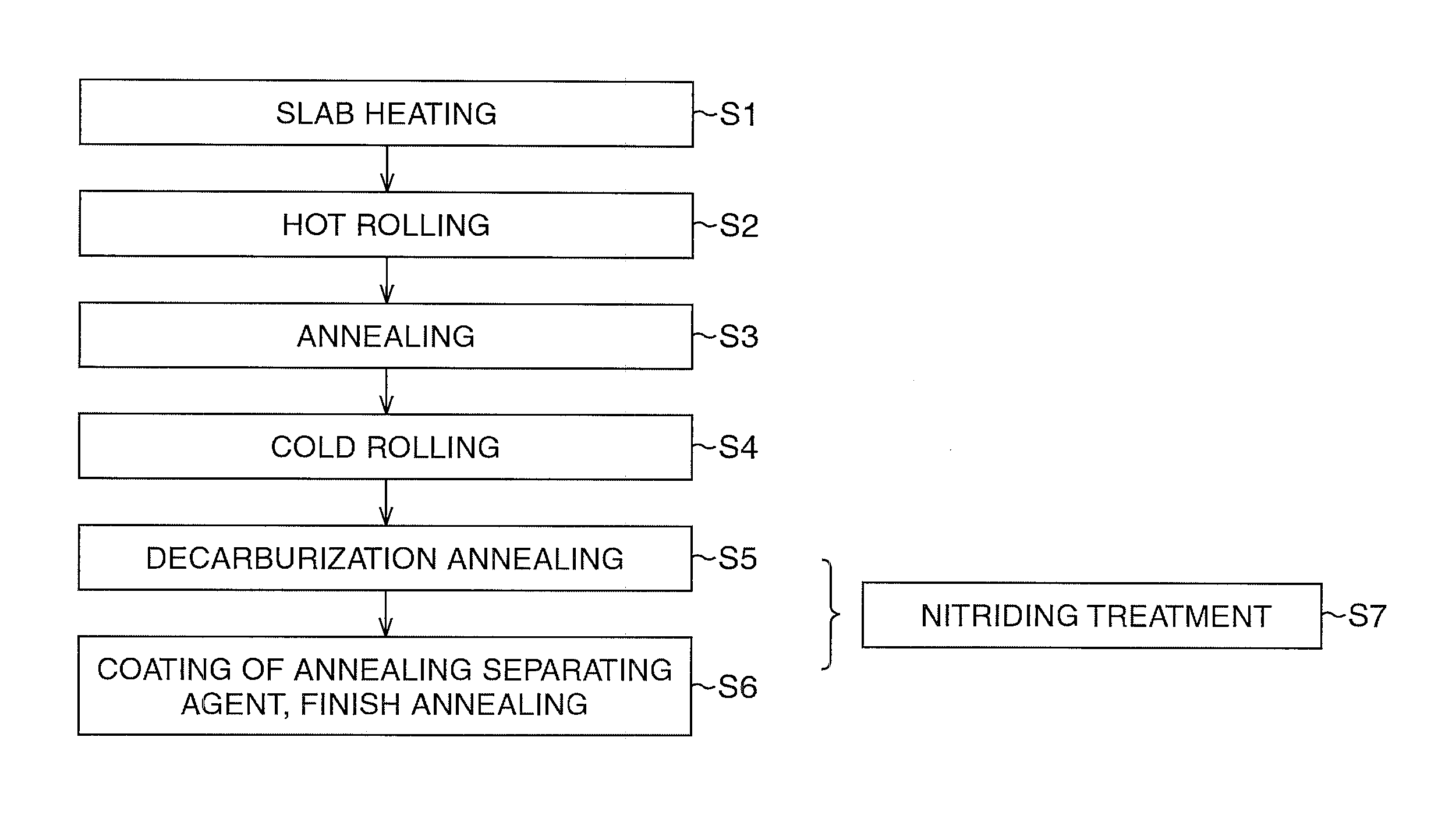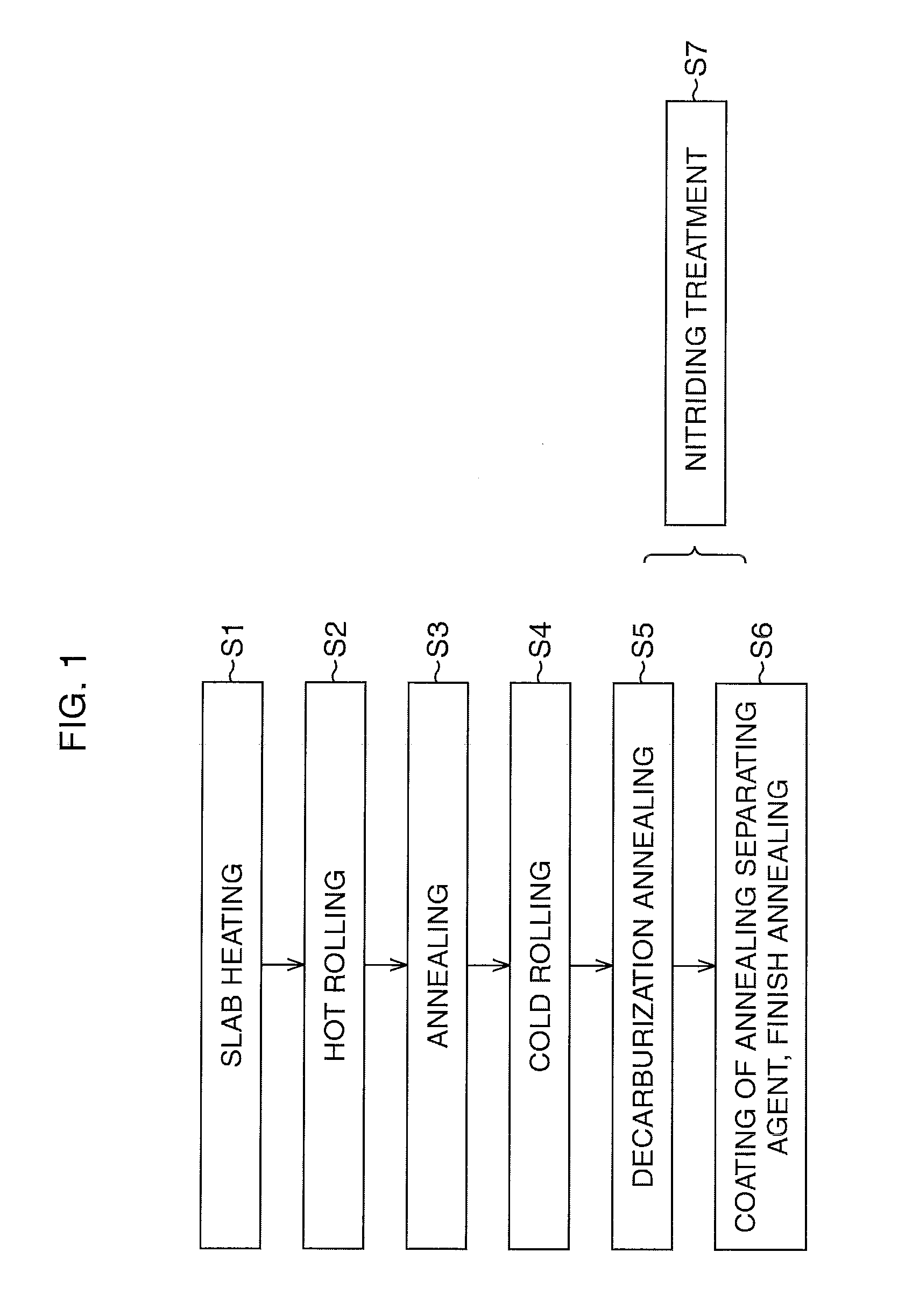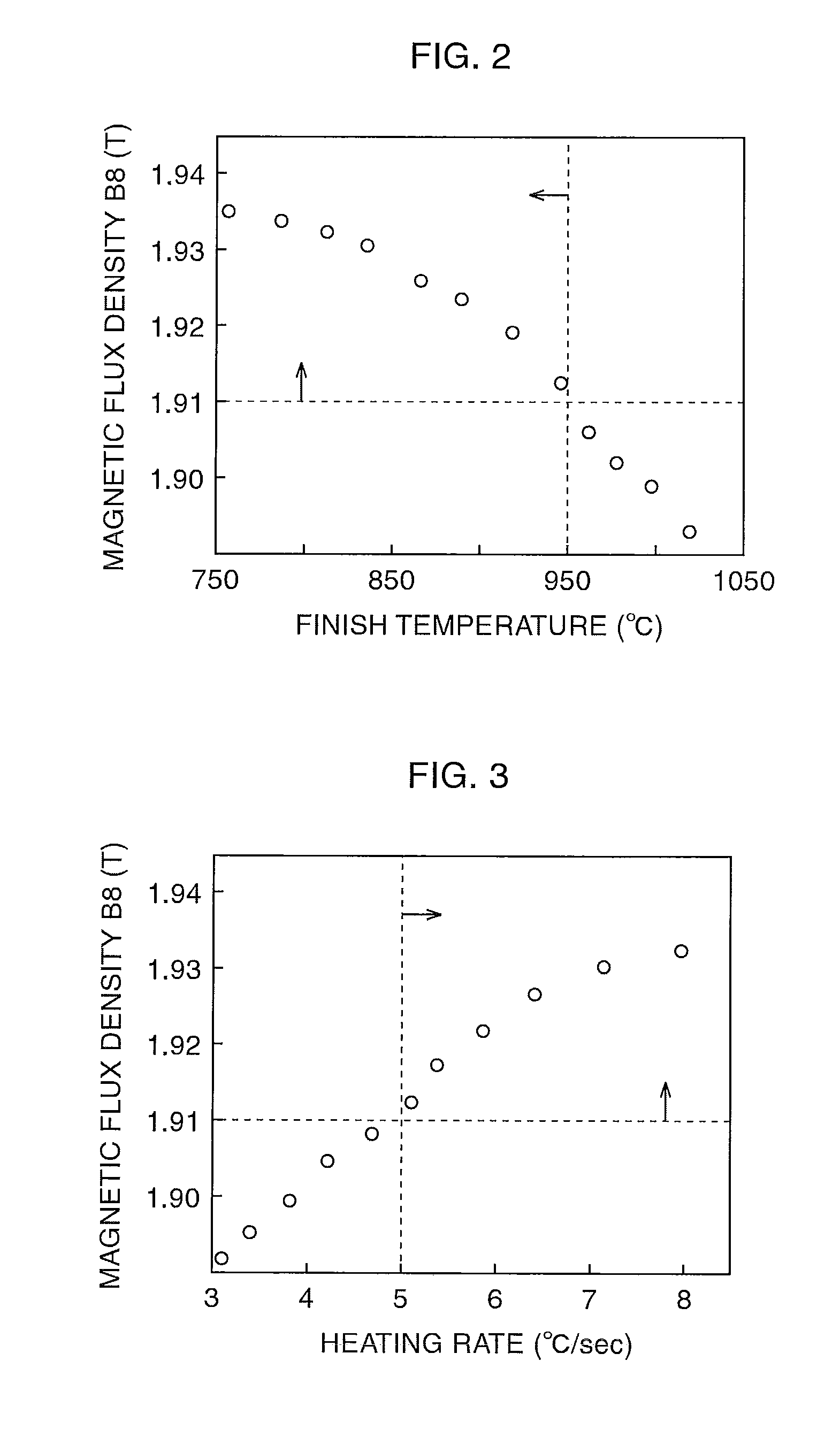Method of manufacturing grain-oriented electrical steel sheet
- Summary
- Abstract
- Description
- Claims
- Application Information
AI Technical Summary
Benefits of technology
Problems solved by technology
Method used
Image
Examples
first experiment
(First Experiment)
[0067]Now, a first experiment will be explained. In the first experiment, relation between the finish temperature of the finish rolling in hot rolling and the magnetic flux density B8 was investigated. The magnetic flux density B8 herein is defined by the one observed when the grain-oriented electrical steel sheet is applied with a magnetic field of 800 A / m at 50 Hz.
[0068]First, a silicon steel slab of 40 mm thick containing, in % by mass, Si: 3.24%, C: 0.054%, acid-soluble Al: 0.028%, N: 0.006%, Mn: 0.05%, and S: 0.007%, and composed of the balance of Fe and unavoidable impurities, was manufactured. Then, the silicon steel slab was heated at 1150° C., and then subjected to hot rolling to obtain a hot-rolled steel strip of 2.3 mm thick. The finish temperature of the finish rolling herein was varied in the range from 750° C. to 1020° C. A cumulative reduction in the finish rolling was set to 94.3%, and a cumulative reduction in the last three passes in the finish ro...
second experiment
(Second Experiment)
[0079]Now, a second experiment will be explained. In the second experiment, relation between the heating rate in the annealing (step S2) and the magnetic flux density B8 was investigated.
[0080]First, a silicon steel slab of 40 mm thick containing, in % by mass, Si: 3.25%, C: 0.057%, acid-soluble Al: 0.027%, N: 0.004%, Mn: 0.06%, S: 0.011%, and Cu: 0.1%, and composed of the balance of Fe and unavoidable impurities was manufactured. Then, the silicon steel slab was heated at 1150° C., and then subjected to hot rolling to obtain a hot-rolled steel strip of 2.3 mm thick. The finish temperature of the finish rolling herein was set to 830° C. The cumulative reduction in the finish rolling was set to 94.3%, and the cumulative reduction in the last three passes in the finish rolling was set to 45%. The cooling was started one second after the completion of the finish rolling, and the steel strip was coiled at a coiling temperature of 530° C. to 550° C. Cooling rate over t...
example 1
[0092]In Example 1, silicon steel slabs of 40 mm thick were manufactured using steels S1 to S7 each containing the components listed in Table 1, and composed of the balance of Fe and unavoidable impurities. Next, each silicon steel slab was heated at 1150° C., and then hot-rolled to obtain a hot-rolled steel strip of 2.3 mm thick. In this process, the finish temperature of the finish rolling was varied in the range from 845° C. to 855° C. The cumulative reduction in the finish rolling was set to 94%, and the cumulative reduction in the last three passes in the finish rolling was set to 45%. The cooling was started one second after the completion of the finish rolling, and the steel strip was coiled at a coiling temperature of 490° C. to 520° C. The cooling rate over the duration from the start of cooling up to the coiling was set to 13° C. / sec to 14° C. / sec.
[0093]Then, each hot-rolled steel strip was annealed. In this annealing, the hot-rolled steel strip was heated at a heating rat...
PUM
| Property | Measurement | Unit |
|---|---|---|
| Temperature | aaaaa | aaaaa |
| Temperature | aaaaa | aaaaa |
| Temperature | aaaaa | aaaaa |
Abstract
Description
Claims
Application Information
 Login to View More
Login to View More - R&D
- Intellectual Property
- Life Sciences
- Materials
- Tech Scout
- Unparalleled Data Quality
- Higher Quality Content
- 60% Fewer Hallucinations
Browse by: Latest US Patents, China's latest patents, Technical Efficacy Thesaurus, Application Domain, Technology Topic, Popular Technical Reports.
© 2025 PatSnap. All rights reserved.Legal|Privacy policy|Modern Slavery Act Transparency Statement|Sitemap|About US| Contact US: help@patsnap.com



